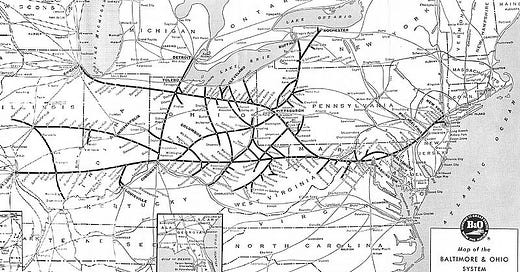Preamble
Faithfully recounting the B&O story simply cannot be done barring mentioning: 1) B&O firsts; 2) Monopolies; 3) Mergers.
“First things,” first. First common-carrier railroad in America. First rail common carrier to stage a race, allegedly, between horse- and locomotive- drawn railroad trains. First common-carrier railroad to deploy an electric locomotive — B&O No. 1 — the first of any railroad in North America and on mainline trackage, no less. First railroad in the United States to make use of Morse Code, a system whereby messages could be sent over wire (electronically) from one party to another.
Monopolies. As America’s first common-carrier railroad, it’s fair — and suffice it — to say the B&O had a virtual railroad monopoly in the U.S. in 1827, the date of its creation. The reality is, there were no competing common-carrier RR’s at the time.
Mergers. B&O became an integral and important part of the Chessie System family of rail lines in 1973. The latter was integrated into CSX Transportation in 1980.
Leading The Way
The B&O, the railroad that began a revolution, and among the first of the common-carriers with its use of “horse-power” in the purest or rawest sense, was the “test bed” both for railway engineering and rail-borne equipment. If one American railroad could be considered the prototype or prototypical, it would have to be the B&O.
Building the Baltimore & Ohio Railroad, although highly controversial and however arduous a task it was, turned out to be an engineering masterwork, proving its worth many times over. In no uncertain terms, the railroad’s building, was an extremely challenging endeavor for its time, what with the primitive tools available to surveyors, engineers and construction crews. The Allegheny Mountains — part of the Appalachian chain of mountains — proved to be a formidable adversary; it was an ever-real and ever-present barrier that had to be surmounted if the railroad-building effort was to be deemed a success.
The challenge was this: Could the undertaking be achieved at a reasonable cost? Could it be accomplished without undue loss of life and limb? Could it be done at all?
It seemed the railroad’s surveyors, engineers and laborers bit off a bit more than they could comfortably chew. However, this thinking proved to be a bit premature as the task of building the railroad that linked the Ohio with the city whose principal port feeds off the Chesapeake Bay, thereby opening the door to international trade, was met. Surely, it would have been easier to lay rails longitudinally along the eastern seaboard as the Northern Central did, which incidentally, took place at about the same time.
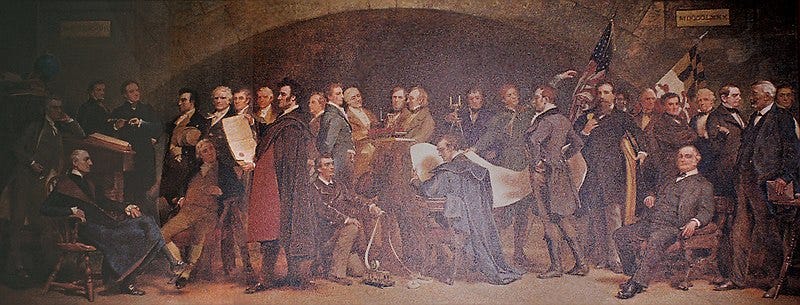
Their minds made up, B&O’s principal backers were convinced that building westerly was the way to go, and unbeknownst to them then, this would actually set a precedent for the principal direction railroading in the United States took from that point forward.
History In The Making
Originally chartered on February 28, 1827, the building of the B&O was a very risky proposition. What Baltimore bankers and merchants were putting their faith in was a then unproven technology. These truly visionary souls, though fully aware of the risk, went ahead and “bet the house,” anyway. There were three options to choose from: 1) Build a canal (like the Erie Canal). 2) Build a turnpike (like the National Road). 3) Build a railroad (like the Albany & Schenectady Railroad).[1] Option number 3 won out, obviously. Of all the options available at the time, the chief backers felt the railroad was the best one. According to Wikipedia, the railroad was constructed to facilitate trade with early settlers venturing west.[2]
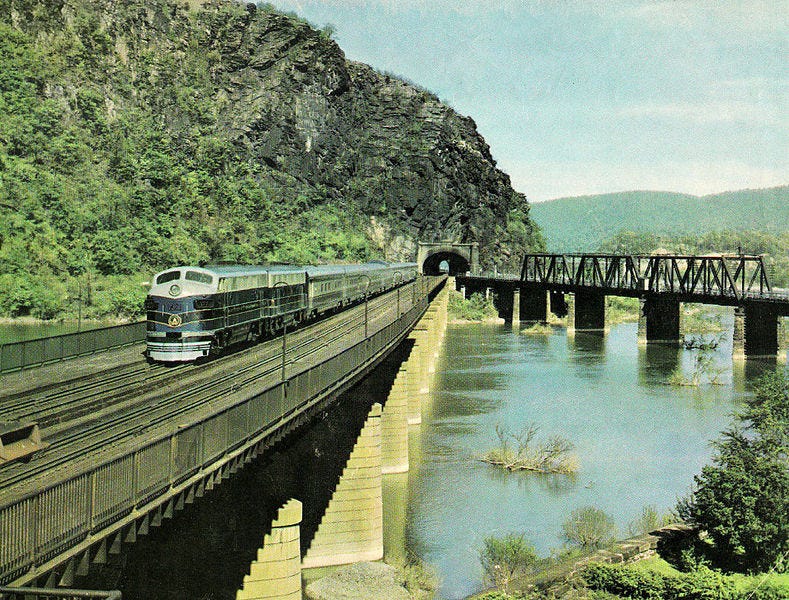
Being the first meant leading by example. Which is true, whether in the U.S., the UK, or anywhere.
In the U.S., meanwhile, in 1830, eyes were on the B&O, the railroad that would come to link thirteen of the nation’s states, to get done what it needed to which was deliver supplies (goods and wares) and people to the tri-state (Pennsylvania, Virginia and Ohio) area and, in particular, to the river region that bore the name of the last. That was the railroad’s mission.
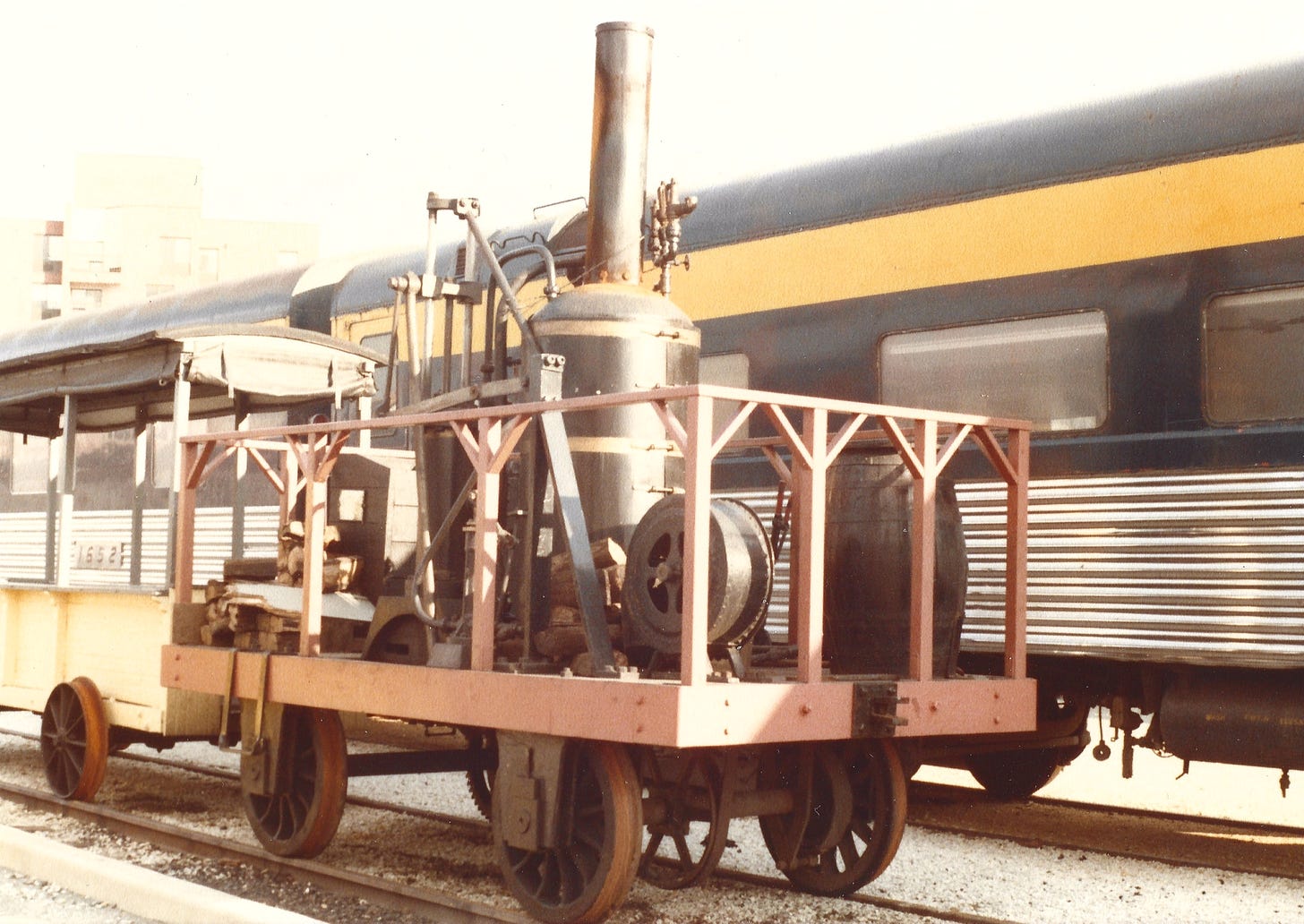
Speaking of 1830, “[I]t was on August 28, 1830, exactly…that real American railroading history was made. It was then that the inaugural run of Peter Cooper’s ‘Tom Thumb’ - the first American made, built-from-scratch locomotive - transpired, signifying, in effect, a new era in - and new course for - ground-based transportation. On that date and commencing in Baltimore, Maryland, occurred the running of the ‘Thumb’ to Ellicott’s Mills (later changed to Ellicott City) and back, on what was then the B&O’s - and the nation’s - first 13 miles of common-carrier track. From that day forward, land-based transit and travel was never the same: the day of automated ground transport had arrived.”[3]
All Was Not Smooth Sailing
There was nothing simple about building the B&O Railroad. One could say with confidence, matters were complicated for this ‘road, right from the get-go. Further complicating matters were the maze of merger and acquisition plots the pike became entangled in, those starting circa the late 1950s in particular.
In September 1957, both the New York Central and Pennsylvania railroads commenced discussions centered around the possibility of their merging. By January 1959, fearing the PRR would dominate a proposed merged company, negotiations were brusquely broken off. Soon thereafter, the Central took full corporate control of B&O through the purchase of a goodly proportion of the company’s stock. In 1960, the Chesapeake & Ohio Railway — which, incidentally, at one time had a stake in the New York Central, got in on the act and ultimately proved victorious in a proxy fight for the right to control the B&O.
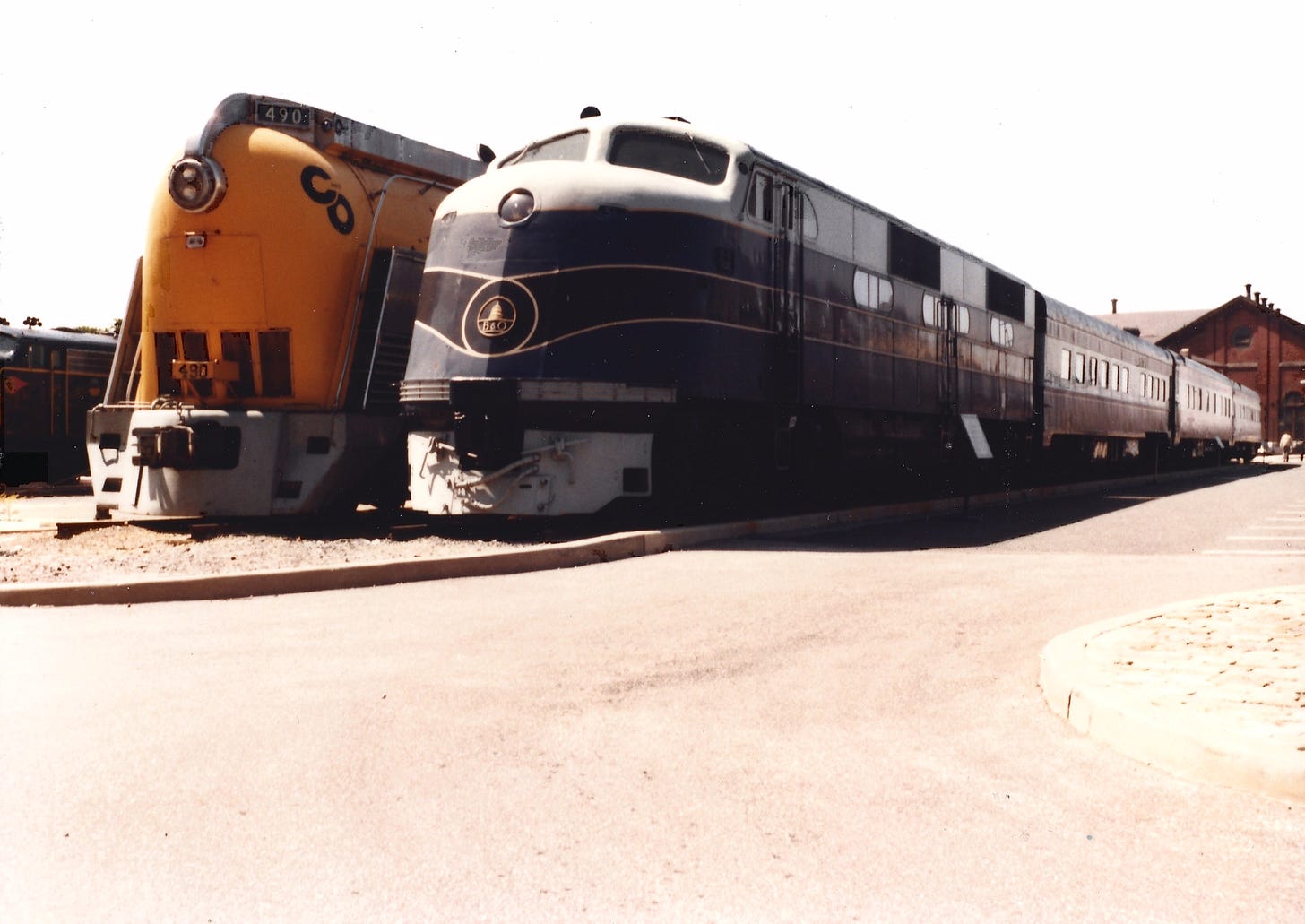
The Interstate Commerce Commission — which at the time had the federal regulatory authority over such merger cases, approved C&O control in 1962. C&O then took full corporate control on February 4, 1963, “George Washington’s Railroad” having purchased more than 99 percent of B&O’s stock. The resulting company then purchased better than 90 percent of Western Maryland Railway stock. (It is important to note that both the B&O and WM as competing entities, and for all intents and purposes having parallel physical plants, were given the regulatory authority to coalesce and, quite surprisingly, the acquisition did not violate one single antitrust statute). Together, these three rail enterprises provided the basis for the establishment of the Chessie System family of rail lines, although each railroad continued to operate independently of the others. For all practical purposes, the B&O was still the B&O, anyway, at least for a while.
In that all good things must pass, such was the case for the Baltimore & Ohio Railroad in 1986. The B&O identity once and for all time was gone; buried, erased, removed (take your pick) by parent CSX — CSX being an amalgam of the Chessie and Seaboard System railroads. And with that, U.S. railroad and transportation history was changed forever.
Notes
Wikipedia, “Baltimore and Ohio Railroad,” https://en.wikipedia.org/wiki/Baltimore_and_Ohio_Railroad
Ibid.
Alan Kandel, The Departure Track: Railways of Tomorrow, “Chapter 1: Section 1.1: A Proud, And Not-So-Proud, Past,” Self-published e-book, 2013.
In an earlier version the Chesapeake & Ohio Railway was mistakenly identified as the Chesapeake & Ohio Railroad. Text has since been revised and is now correct.
Updated: Jan. 1, 2025 at 7:35 a.m. PST.
Image credits: First through third photos, JGHowes collection via Wikimedia Commons; fourth, fifth photos, Alan Kandel; sixth: from an unknown graphic designer under contract to CSX Corporation via Wikimedia Commons
All material copyrighted 2025, Alan Kandel. All Rights Reserved.

